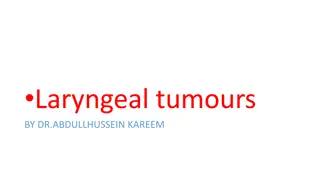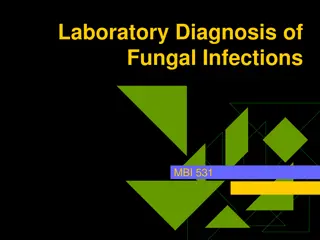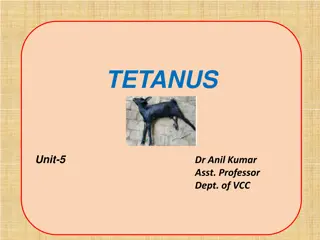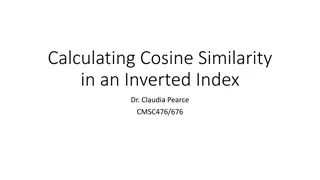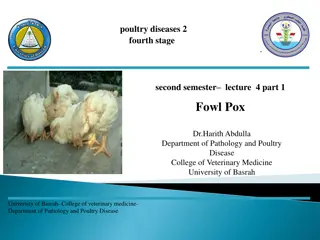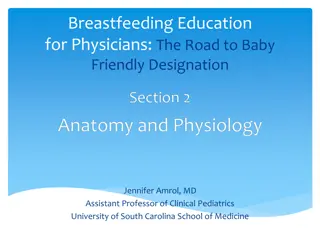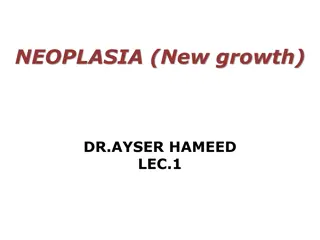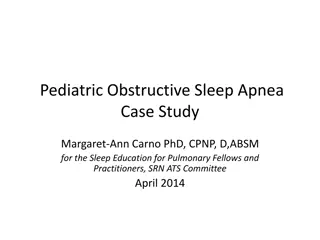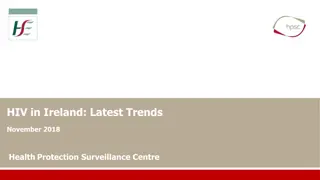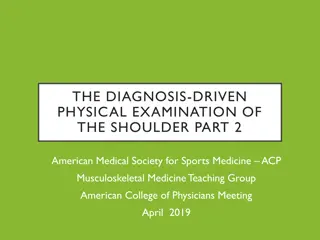Inverted Papilloma Case Report and Diagnosis
A 62-year-old male presented with a mass in the right nasal cavity causing obstruction and headache. No history of URTI or allergies. Local examination revealed a pinkish mass with possible differential diagnosis of Antrochoanal Polyp, Ethmoidal polyposis, or Inverted Papilloma. Nasal endoscopy showed a polypoidal mass in the right nasal cavity. Further investigations needed for confirmation.
Download Presentation

Please find below an Image/Link to download the presentation.
The content on the website is provided AS IS for your information and personal use only. It may not be sold, licensed, or shared on other websites without obtaining consent from the author.If you encounter any issues during the download, it is possible that the publisher has removed the file from their server.
You are allowed to download the files provided on this website for personal or commercial use, subject to the condition that they are used lawfully. All files are the property of their respective owners.
The content on the website is provided AS IS for your information and personal use only. It may not be sold, licensed, or shared on other websites without obtaining consent from the author.
E N D
Presentation Transcript
A Case Report: Inverted Papilloma Dr. Sayali B. Goregaonkar Junior resident 3 Dept Of E.N.T and Head and Neck Surgery
Case Report A 62-year-old male patient came to the Out patient Department of ENT Chief complaint of mass in right nasal cavity since 6 years and nasal obstruction since 2 years . The patient first noticed the swelling 6 years back which had gradually progressed to the present size. Also complaints of nasal obstruction which was insidious in onset and gradually progressed. No aggravating or relieving factors. History of recurrent headache which was relieved temporarily after medication
Case Report No history of recurrent URTI No history of allergic symptoms No history suggestive of post nasal drip No history of Epistaxis No history of facial swelling No history of aural complaints
Past History: No history of Tuberculosis or major surgical illness in the past. Family History: Not Significant Personal History: Not significant General examination: Conscious, Co-operative Systemic examination: Within Normal Limit
Local examination: Nose: External Deformity: No external deformity Osteocartilagenous framework: Normal Columella: Normal Vestibule: Normal Anterior Rhinoscopy: A pinkish mass seen occupying whole of right anterior choana pushing septum to opposite side. Surface of mass appears smooth, no discharge, no visible pulsations. Floor of nose appears free from mass. Nasal mucosa, Inferior turbinate cannot be visualised on right side. Left nasal cavity appears normal.
Local examination: Nose: Probe test: Probe can be passed medially, inferiorly, but cannot be passed supero- laterally. Mass is non tender, did not bleed on touch and firm in consistency. Posterior Rhinoscopy: Within normal limit Paranasal sinus examination: Tenderness present over right maxillary sinus Ear: Within normal limit Throat: Within normal limit
Based on the Clinical features, a differential diagnosis of -Antrochoanal Polyp - Ethmoidal polyposis - Inverted papilloma
Investigations Diagnostic Nasal Endoscopy On diagnostic nasal endoscopic examination a pinkish polypoidal mass was seen in the right nasal cavity arising from right middle meatus. Does not bleed on touch.
Investigations CT scan of PNS: A large soft tissue density mass of size approx. 5.3(AP)x 1.7(T) cm is noted in right nasal cavity which is displacing towards left, bilateral ethmoid trabeculae, middle and inferior nasal turbinates, Bilateral superior nasal turbinates, superior portion of medial wall of maxillary sinus, medial portion of maxillary sinus, bilateral lamina papyracia, cribiform plate. It is not causing erosion and destruction of bony nasal septum. There is no extension of mass or any compression on muscles of right orbit or optic nerve. Fat planes are preserved. There is no intracranial extension or erosion of cribiform plate.
Investigations Biopsy Biopsy from nasal mass was suggestive of Sinonasal papilloma.
Intraoperative Endoscopic view of Nasal Mass visualised Excised mass
Histopathology Histopathological report of nasal mass was suggestive of Inverted Papilloma.
Low power view: This section shows nests of squamous epithelium, arranged in papillary pattern. Enclosing fibrovascular stroma.
High power view: This section shows psuedostratified ciliated columnar epithelium of nose. The mass was situated below the nasal mucosa. Fibrovascular tissue shows scattered inflammatory cells
No atypia, no features of malignancy seen in the sections examined. Histopathological findings are suggestive of Inverted papilloma of nose.
Discussion Inverted papilloma also called Schneiderian papilloma or Ringertz tumor . It is a benign neoplastic growth of superficial epithelium of nasal mucosa. It is more common in 2nd to 6th decade of life. Male to female ratio is 3:1. Incidence of inverted papilloma is 0.6 cases per 100000 people per year and comprises 0.5 4% of all primary nasal tumors.
Discussion Arises from the lateral nasal wall (middle turbinate or ethmoid recesses), middle meatus, extending into ethmoid and maxillary sinuses. In advanced cases, extension into all ipsilateral paranasal sinuses may occur. Intracranial extension or dural penetration is rare.
Discussion Squamous cell carcinoma is the most common malignant neoplasm associated with inverted papilloma. Other malignant neoplasm are adenocarcinoma and small cell carcinoma. Inverted papilloma is caused by HPV 6, 11, 16, 18 and Epstein Barr viruses. Inverted papilloma has a high rate of recurrence between 0 and 78 percent Patients with inverted papilloma usually present with nasal obstruction, rhinorrhea, epistaxis, anosmia, nasal mass and headache. Proptosis and facial swelling sometimes develop secondary to expansion of lesion.
Discussion Krouse staging system Stage - 1 Tumor restricted to nasal cavity Stage - 2 Tumor restricted to ethmoid sinus and medial portion of the maxillary sinus Tumor involving the lateral or inferior or superior portion of the maxillary sinus or frontal or sphenoid sinuses Stage - 3 Stage - 4 Tumor beyond nose and paranasal sinus boundaries or malignant disease
Discussion Radiological features seen in contrast enhanced CT in inverted papilloma include varying degree of bone destruction like thinning, remodeling, erosion, sclerotic bony changes, widening of infundibulum in involvement of maxillary sinus, slight enhancement and calcification. Biopsy is the diagnostic method of choice. Multiple sections need to be examined to define the initial tumor type as inverted papilloma can be associated with coexisting malignancy. Histopathological examination classically shows inverted growth pattern of stratified squamous epithelium into underlying stroma.
Discussion Inverted papillomas are effectively managed by surgery. There are four types of approaches endoscopic, lateral rhinotomy , midfacial degloving and modified Lothrop. Endoscopic approach was first tried by Stammberger in 1981. Endoscopic surgery is effective for inverted papilloma restricted to middle nasal meatus, anterior ethmoidal cells and posterior ethmoidal cells, nasofrontal recess or sphenoid sinus.
Discussion Advantages of endoscopic approach: Superior visualization Preservation of normal sinonasal physiological function Achievement of mucocilliary clearance pattern Lack of an external scar Shortened hospital stay Decreased blood loss Increasing the patient s quality of life.
Discussion Inverted papilloma has a high rate of recurrence between 0 and 78 percent and recurrence represents residual disease in most cases. It is imperative to completely excise the tumor with appropriate surgical approach.




